A family of underwater treasure hunters has once again struck gold off the coast of Florida, recovering more than a million dollars in valuable artifacts from the wreckage of a 1715 Spanish fleet that sank in the Atlantic.
Eric Schmitt, 27, who hunts for treasure professionally with his family on their salvage ship Aarrr Booty, found and surfaced the pieces off Fort Pierce in June.
The impressive haul included 51 gold coins of various denominations and 40 feet of ornate gold chain.
Scroll down to watch the video
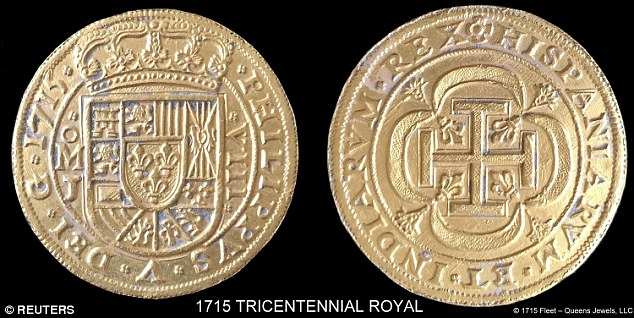
Precious: a rare ‘Royal Tercentenary’ gold coin found in June among the wreckage of a 1715 Spanish fleet that sank in the Atlantic off the coast of Florida.
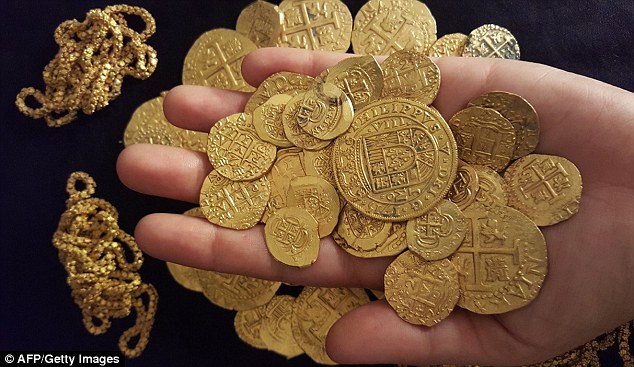
Gold Rush: The find included 51 gold coins of various denominations and 40 feet of ornate gold chain.
Brent Brisben, whose company, 1715 Fleet – Queens Jewels LLC, owns the rights to the wreck, said he timed the announcement to coincide with the 300th anniversary of Friday’s sinking of 11 of the 12 galleons brought down by a hurricane off the coast of Florida. The convoy was sailing from Havana to Spain.
Up to 1,000 lives were lost in the maritime disaster that occurred on July 31, 1715.
The small fleet, under the command of Captain General Don Juan Esteban de Ubilla and his flagship, the Capitana, carried 3.5 million pesos in gold and jewels, including property of the Queen of Spain.
Eric Schmitt found the artifacts in 15 feet of water off Fort Pierce, about 130 miles north of Miami.
The Spanish convoy manifests indicated that the ships were carrying cargo valued today at about $400 million, of which $175 million has been recovered, Brisben said.
His company bought the rights to the site in 2010 from the heirs of legendary treasure hunter Mel Fisher, and the firm allows others, including the Schmitts, to search under subcontracting agreements.
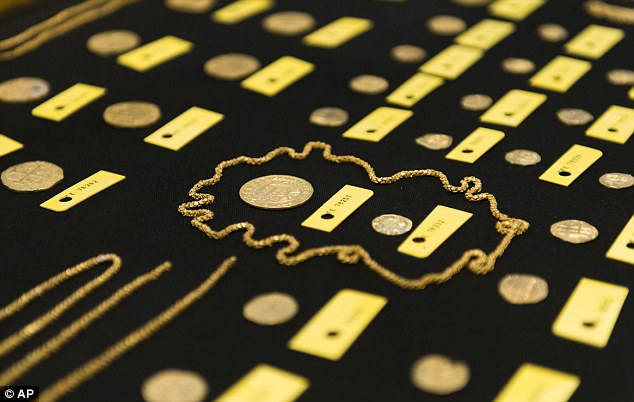 The discovery came just weeks after the 300th anniversary of the sinking of the 11-ship Spanish fleet off the central Florida coast after being caught in a hurricane during a voyage from Havana to Spain.
The discovery came just weeks after the 300th anniversary of the sinking of the 11-ship Spanish fleet off the central Florida coast after being caught in a hurricane during a voyage from Havana to Spain.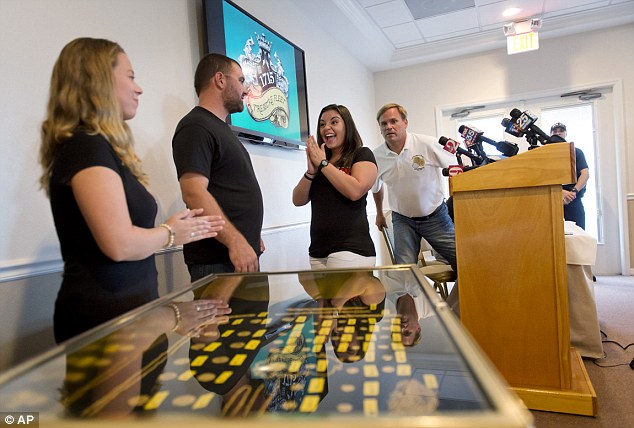
Eric Schmitt, second from left, at a news conference in Sebastian, Florida, on Tuesday. Lindsay Schmitt, his wife, is on the left and Brent Brisben, the owner of 1715 Fleet – Queens Jewels, is on the right. Sister Hillary Schmitt, second from right.
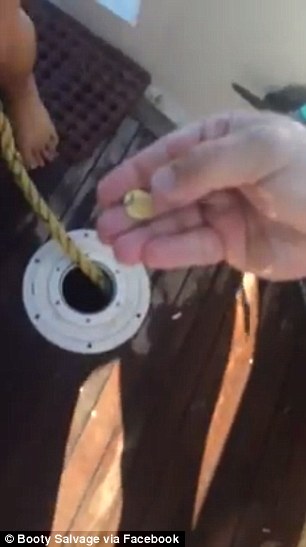
Stroke of luck: Diver Eric Schmitt (left) is pictured rising to the surface after recovering a sunken gold coin from Fleet 1715 lost off Fort Pierce, Florida.
Navy condemned: Friday marks 300 years since the sinking of 11 of the 12 galleons brought down by a hurricane off the coast of Florida when the convoy was sailing from Havana to Spain
The centerpiece of Schmitt’s latest find is a perfect specimen of a so-called ‘royal tercentenary’ coin made for King Philip V of Spain and dated 1715. Only about six royals were known to exist, according to a press release of the Brisben company.
The gold chains are made of small double-sided links crafted from six-petal olive flowers. They were called money chains and are believed to have been used as tax-free currency, according to the news release.
Under federal and state laws, Florida will take possession of up to 20 percent of the find for display in a state museum. Brisben’s company and the Schmitt family will split the rest of the loot, Brisben said.
The Schmitt family has been working on the sunken treasure of 1715 for two years.
Last July, Eric Schmitt recovered the missing piece of a 300-year-old gold filigree necklace called Pyx that was sacred to Spanish priests.
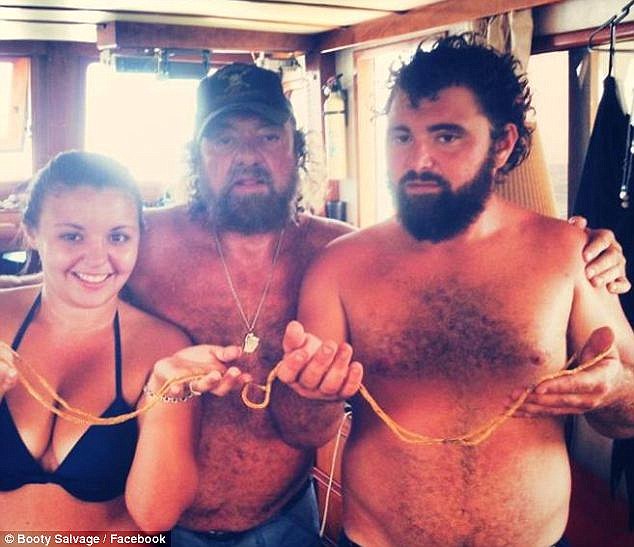
Family Business: Eric Schmitt (right): Along with his sister Hillary (left), father Rick (center), and other family members, they run a dive salvage company called Booty Salvage.
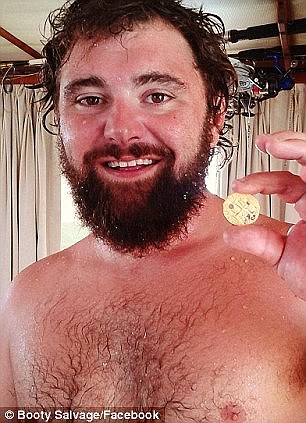
Past successes: Last July, Eric Schmitt recovered the missing piece of a 300-year-old gold filigree necklace called Pyx, and in 2002 the young diver found a 300-year-old Mexican silver tray.
“The more we do this, the bigger the discoveries we make, so I believe less in luck and more in our hard work,” Schmitt told CBS News.
The previous year, the Schmitts found three pounds of fine gold chains, five gold coins and a gold ring worth a total of $300,000 in the same 300-year-old remains.
Rick Schmitt has been diving for treasure since he was a teenager in the ’60s. He retired in 1999 and started the family diving salvage business.
Another notable discovery was that of his son Eric in 2002; Near Sebastian he found a 300-year-old Mexican silver tray worth about $25,000.